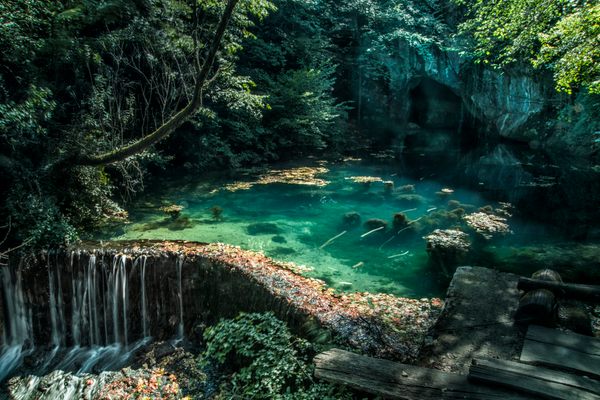AO Edited
Al Thakira Mangroves Forest
A mesmerizing wonderland of salt-encrusted tree branches and pencil roots.
Al Thakira Mangrove Forest is among Qatar’s oldest and largest such forests. It’s a welcome surprise to find a mangrove forest like this such a short distance from industrial Al Khor.
Considering the harsh environment, there aren’t many plants endemic to Qatar, and mangroves are one of these sturdy few. The local type of mangrove native to the country is the Avicennia Marina (aka white or gray mangrove), a species that can endure the high level of salinity that’s characteristic of the Persian Gulf.
Mangroves are a unique ecosystem both above and below water. Beneath the water’s surface, tree branches get covered with salt, seaweed, and tiny seashells. Part of the mangroves’ underground roots are equipped with snorkels, known as pencil roots, that enable them to absorb air during high tide. With high tide, fish swim through branches and pencil roots. The ecosystem attracts migratory birds such as herons and flamingos. Numerous types of fish and crustaceans are visible throughout the year.
Know Before You Go
Only about five miles (8 kilometers) from the city of Al Khor, Al Thakira Mangrove Forest can be reached by car. This requires a 1.2-mile (four-kilometer) off-road ride through compacted sand and salt flats. The dirt track ends on the beach where the mangrove forest begins. There are no signs and no facilities nearby.
Pencil roots spread up to 33 feet (10 meters) for the tree trunk, and they usually form a close-knit pattern. Stepping on pencil roots would damage them, probably resulting in the demise of the mangrove tree. It is, therefore, advised not to walk through the mangrove forest. It is a safer option to wade along the coastline, along the tidal line demarketing the outer limits of the mangrove forest. With high tide, another alternative is to kayak along the coastline and into inlets. The latter option allows taking in the small mangrove islets a short way from the mainland.































Follow us on Twitter to get the latest on the world's hidden wonders.
Like us on Facebook to get the latest on the world's hidden wonders.
Follow us on Twitter Like us on Facebook